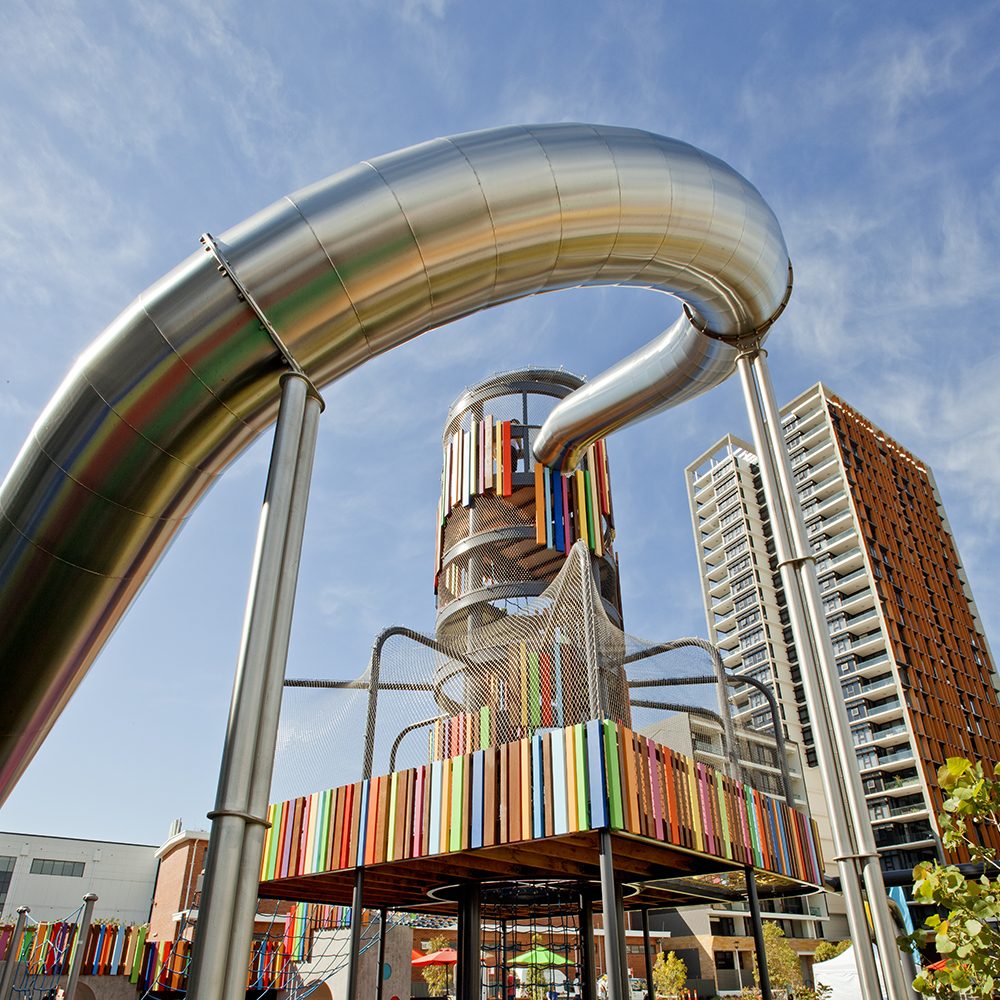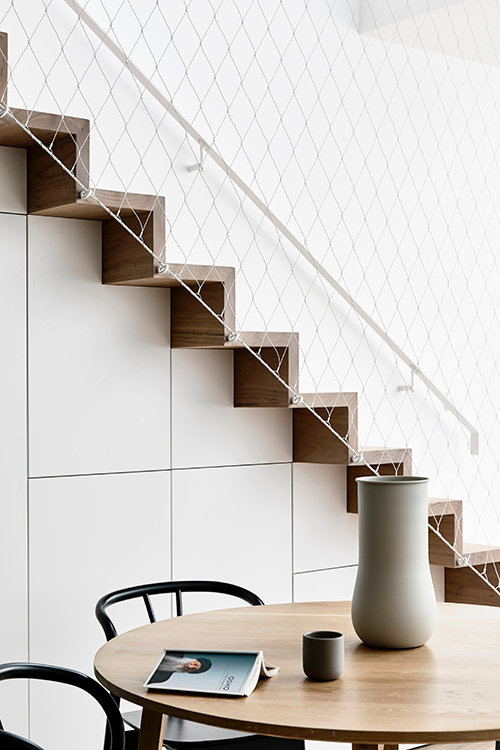The practical benefits of Jakob’s Webnet mesh for barriers are substantial. These include robustness and longevity (lasting up to 25 years), fire and weather resistance, low maintenance needs, the ability to accommodate large spans and options for cable and aperture sizes.
However, while Webnet is often associated with safety in barrier infrastructure, it offers more than that. It has a malleable fabric-like quality that makes it unique amongst barrier materials.
This characteristic makes Webnet great for design that is ‘outside the box’. It means that the mesh can be twisted, turned, stretched and wrapped around objects, in much the same way that fabric can. It can even be used to create 3D sculptural shapes such as funnels, cylinders and spheres. On top of that, Webnet is easy to work with making for fast installation.
Webnet suits designers and architects involved in the creation of unique projects that involve curved and unusual geometric shapes, or where a safety net with drape effect is required.
Webnet for unique barrier infrastructure design
Here are some examples of Webnet designs that don’t fit the norm:
- Safety barriers that wrap around and over spiral staircases or atriums. An example of this can be seen at the extension of the Royal Far West children’s health building in Manly – where a fall protection screen wraps over and around the curved staircase.
- Barriers for bridges that have spiral or curved geometries – such as Lachlan’s Line Bridge near Macquarie Park. In this project, 63 pieces of 40mm Webnet form the transparent and frameless anti-throw screen along the length of the steel tubular pedestrian bridge.
- Playgrounds that need a high level of safety on quirky-shaped equipment – such as climbing towers or treehouses.
Green facades that need to wrap around objects such as indoor or outdoor posts.

Webnet suits any project where a barrier or facade needs to go around corners, accommodate twists and turns, or fold or drape over an object.
How does Webnet compare to other barrier materials?
Various materials, such as glass, Chainlink, timber and steel, also offer benefits when it comes to barriers.
For example:
- Glass – offers transparency as well as longevity and durability.
- Chainlink – relatively inexpensive and quick to install, although longevity and aesthetics are lacking.
- Timber rails – these can look great and can last a long time. They are not great for fire-resistance though.
- Steel rails – tough, durable and low maintenance, but with a somewhat harsh appearance.
While all these materials may suit various types of barriers, if it’s geometric freedom you’re after, none of them really fit the bill. For example, they lack the pliability and capacity for artistry that Webnet offers – such as the ability to accommodate curved shapes and large spans at the same time.
Other aesthetic advantages of Webnet include excellent customisation and a translucent appearance. It can also be coloured to suit the project.
Barrier project examples using Webnet
Elizabeth Quay Footbridge, Perth
The brief for this project was to create a transparent but robust balustrade that could accommodate the bridge’s twisting, curved design.
Customised 2mm wire mesh with a 50mm aperture-opening was used for the barrier, due to its combination of wind-resistance, robustness and ability to conform to the s-shape of the bridge.
Ian Potter WildPlay Garden, Sydney
If there was ever a quirky shape it would have to be the ‘eel skeleton’ climbing tower at the Ian Potter kids’ park! It was designed to reflect the eels that are common in the local watercourses, and it required a safety net.
Webnet 40mm aperture mesh was used to wrap the climbable eel to meet required safety codes, without interfering in views or the visual design.
Carlton House, Melbourne
While this project does not involve geometric shapes, the balustrade does demonstrate how Webnet can make an attractive and safe barrier that can blend in and form part of the architectural design.
Get in touch
Do you have a design in mind for barrier infrastructure that could benefit from Webnet’s unique fabric-like features? If so, don’t hesitate to contact our team for a discussion.






































